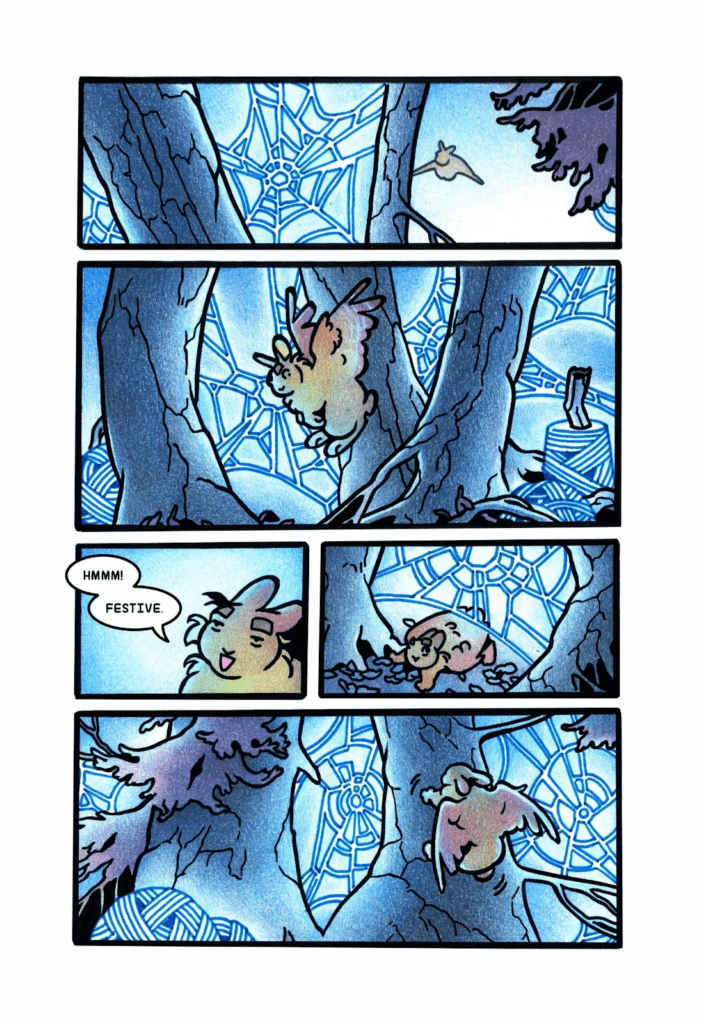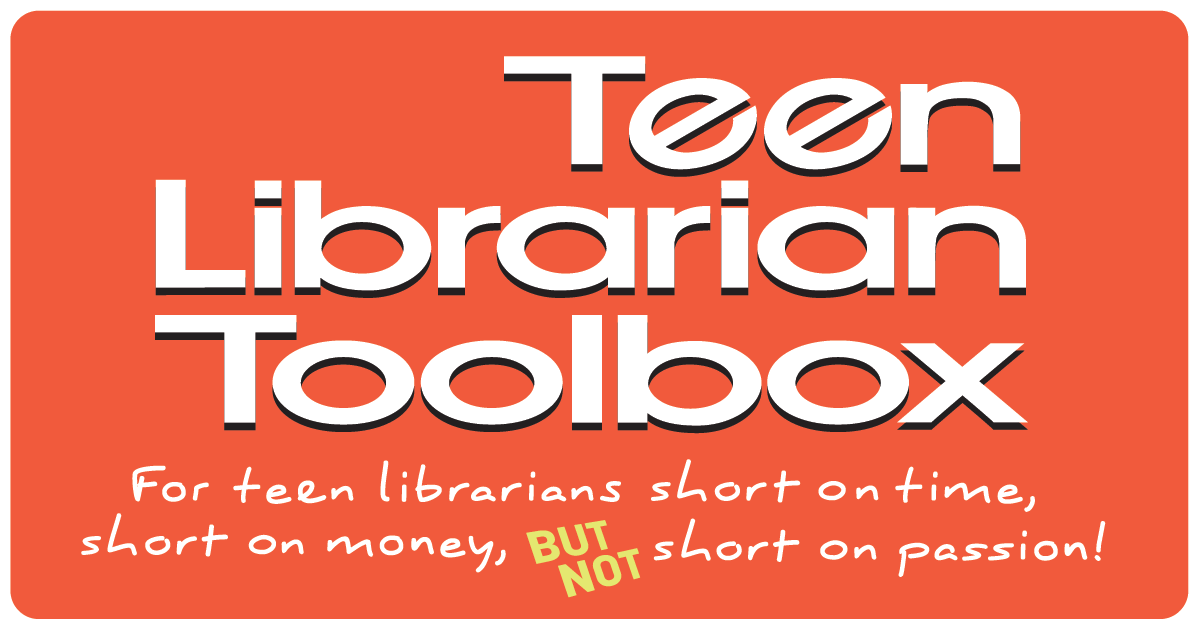Answering the Eternal Question of “Why?” A guest post by Natalie Linn

For the third time this month I answer: “Yes, that really is colored pencil.”
The next question is usually, “Why?”
It’s a valid reaction. Comic artists are typically paid per page, and page rates fluctuate wildly between comic publishers. A general “artist” (in comics, the work is often divided between a writer, a sketch artist, an inker, a colorist, and a letterer) can expect to receive anywhere from $25–250 per finished page. My page rate for my middle grade graphic novel, Bunnybirds, hovered around $67, with an added $6000 bonus upon delivery—$18,000 per book, all told.
That’s all to say: With comics, speed is the name of the game. Churn out enough pages in a week, and you can sometimes brute force a low page rate into a living wage—blood-to-caffeine ratio notwithstanding.
ADVERTISEMENT
ADVERTISEMENT
What you cannot do, by all laws of art, finance, and possibly physics, is take a notoriously slow medium—say, a stick with a piece of colored wax jammed in the middle—and expect to put out enough content to outpace a $67 page rate.
Each medium brings its own unique strengths and challenges. I don’t mean to paint digital art as an “easy” art form: A hammer is not “easier” than a screwdriver. What matters is the task at hand. As a colored pencil artist, I could barely produce four pages a week, at about 10-14 hours per page. With my last $6000 reserved for the finish line, my day-to-day wage along the racetrack plummeted to $6 an hour. Given the specs of my particular dilemma, a migration from printer paper to pixels posed the most viable solution.
Needless to say, Bunnybirds would not exist but for the endless generosity of my mother, Amy Linn, who opened up her home to me rent-free for the three and a half years I spent hunched over my rumpled empire of paper, pencil shavings, and coffee mugs.
Thus the eternal question: “Why?” Why not transition to a digital art program? My style is not so radical as to transcend digital replication, given the versatility of programs like Procreate or Rebelle.

So, what’s my excuse?
First, I blame stubbornness.
I am a Linux computer disguised as a Macbook. As a teenager I learned to bury any behavior which might read as “too much” or “other.” Art was my primary release. Here I could be my autistic self without compromise or apology.
In such a way, I’ve come to equate my autism with my art—particularly the parts which readers might find uncomfortable or different. It can be difficult for my brain to separate helpful advice from a threat to this precious slice of authenticity. For years my college professors begged me to add dark outlines to my colored pencil art. I only complied once my publisher made the same request—at which point I discovered the glory of black brush markers and never looked back.

I also blame love.
People ask me if I get bored while I work—and yes, I do. Scratch a wax nub back and forth over a piece of Xerox paper over and over for a year and a half, and you’re bound to abscond the mortal coil at least once. But by the same token, my process is meditative and nostalgic. I’ve completed this back and forth trek a thousand times, over a thousand different sheets of paper, ever since I received a pack of Crayola pencils for my eleventh birthday. I watch the colors pile up and up until I’ve coaxed something complicated and lush out of the aether—and I still feel a bit like a wizard every time.
I love the tactileness of traditional art. I love the soft give of Prismacolor wax, and the scritch scritch scritch sound of pencil against paper. Bunnybirds is a story about rabbits, nature, and the power of emotional honesty. In an industry (and more widely, society) which narrows our modes of self-expression to the economically viable, I consider myself very privileged to have enjoyed the time and space to tell my story via a medium so tied to my authentic self. I hope those pieces of my heart translate to readers—and I hope that one day, this career will be so accessible that when someone asks me, “Why?” I can just tell them, “Why not?”
Meet the author
A childhood in the mountains gave Natalie Linn a deep respect for nature and a love for background art. She graduated from the Rhode Island School of Design in 2019 with a BFA in illustration. Her tools of the trade are Prismacolor colored pencils, Crayola markers, Copics, Xerox 3R13038 paper, and Rockstar energy drinks.
Website (and Tumblr) — https://natalielinn.com/
Twitter — https://twitter.com/linn_comics
About Bunnybirds #1
ADVERTISEMENT
ADVERTISEMENT
Princess Aster must leave home to discover why her people are disappearing—even if it means journeying over the rim of the world itself—in this animal fantasy graphic novel perfect for fans of blockbuster series like Warriors and Wings of Fire.
The Bunny who worries is heavy and slow. To fly with the flock, one must learn to let go.
Be content and with joy! Lay fears to rest: the bunny who smiles suits the bunny flock best.
In Princess Aster’s world, Bunnybirds live in contented isolation, keeping themselves detached from the world in order to practice magic and receive prophetic visions. Nothing is ever wrong, and no one is ever angry. . . even as Aster’s people seem to be slowly disappearing. But when her father is next to go, her goal is as definite and unclouded as her heart: she’s going to rescue him, no matter how.
To find her people, she must leave the royal Home Tree and travel to the Court of Dragons—and then across sea flats, through deserts, and over the rim of the world itself—to find out what’s happened, with only the exiled bunnybird thief Carlin and the lackadaisical centipede-dog Feet for company.
The further Aster travels from home, the more questions she has: Are the Bunnybirds truly as happy as they say? And if they aren’t, can she let go of age-old traditions in order to rescue her friends?
A sweet but sweeping graphic novel adventure, Bunnybirds offers readers a richly imagined animal world full of magic, danger, and excitement.
ISBN-13: 9780823449262
Publisher: Holiday House
Publication date: 06/11/2024
Age Range: 8 – 12 Years
Filed under: Guest Post
About Amanda MacGregor
Amanda MacGregor works in an elementary library, loves dogs, and can be found on BlueSky at @amandamacgregor.bsky.social.
ADVERTISEMENT
ADVERTISEMENT
SLJ Blog Network
Who’s Waldo? 6 Seek-and-Find Finds for 2025
Myrick Marketing Publishing Summer & Fall 2025 Preview – Part One: Floris Books, Gecko Press, and Helvetiq
Junie B. Jones and the Stupid Smelly Bus: The Graphic Novel | Review
When Book Bans are a Form of Discrimination, What is the Path to Justice?
Pably Cartaya visits The Yarn
ADVERTISEMENT







